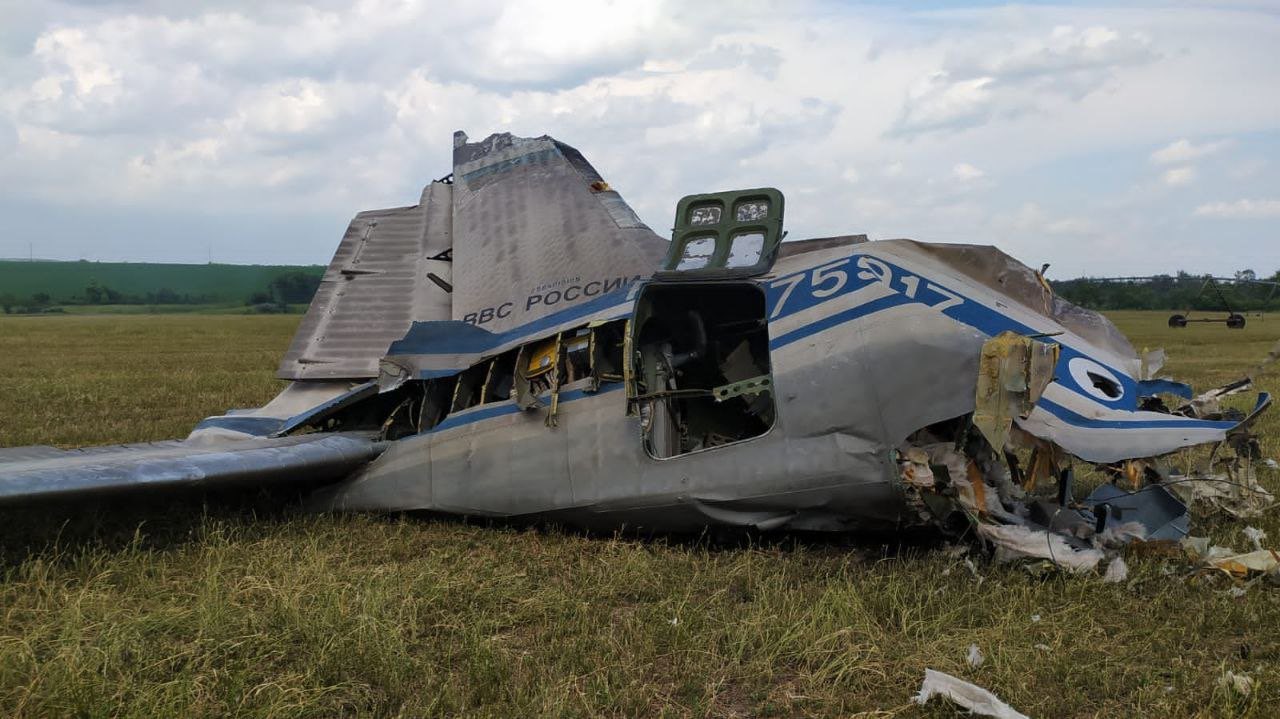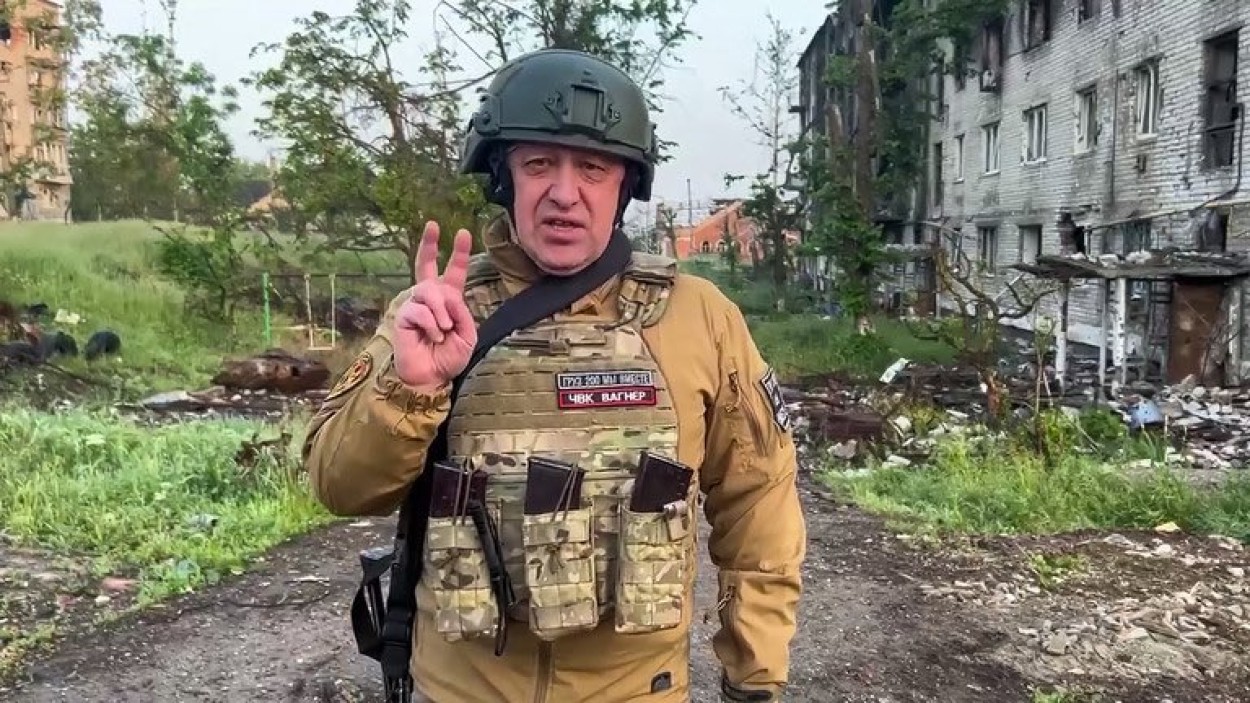In an audiotape released on June 26, the head of the Wagner PMC justified his short-lived insurrection while expressing “regret” for downing Russian military planes, insisting they were left with no alternative.
China Threat Forces Japan To Test Starlink Satellite That Played A Critical Role To Keep Ukraine Connected
Incidentally, it was not Ukraine but Wagner PMC, which resulted in one of the most significant losses for the Russian Air Force (RuAF), if not the most significant, that killed 10 military crew and loss of a critical military aircraft.
Yevgeny Prigozhin, in his first public statement since the resolution of the Wagner Group rebellion through a murky peace agreement, asserted that his actions were driven by the intention to safeguard the Wagner private military company from destruction.
Furthermore, he also explained that it was a direct reaction to an attack on a Wagner camp that resulted in the loss of approximately 30 combatants.
Following an alleged agreement brokered by the President of Belarus, the boss of the Wagner Group had noticeably refrained from posting for a day and a half after suddenly halting his advance toward the Russian capital.
Prigozhin clarified that he opted against entering Moscow to prevent unnecessary bloodshed and highlighted that their objective was to express their protest rather than to overthrow the government.
The mercenary group leader also admitted the involvement of Aleksandr Lukashenko, the Belarusian President, who he stated had extended assistance in finding a legitimate jurisdiction for Wagner to continue its operations.
However, Prigozhin neither confirmed Russian officials’ claims of agreeing to exile in Belarus nor provided any clues about his current location.
In his statement, the Russian warlord openly ridiculed Russia’s military, describing his march as a “master class” on how the invasion of Ukraine in February 2022 should have been executed.
He further derided the Russian military for its inability to safeguard the country. He noted security vulnerabilities that enabled Wagner to cover a distance of 780km (500 miles) without encountering any opposition and effectively blocking military units along its route.
In addition, he also did not offer an apology for his mutiny and instead expressed regret solely for being compelled by circumstances to participate in an armed rebellion.
“We regret that we had to hit air assets, but those assets were dropping bombs and launching missile strikes,” Prigozhin said.
Biggest Loss For Russian Air Force
While the mutiny was short-lived, it was not without bloodshed. Multiple media sources have reported that Wagner forces shot down many military aircraft, resulting in the deaths of at least 15.
The Wagner fighters brought down a total of six Russian military aircraft. The targets included five helicopters, an Ilyushin Il-22M Coot aerial command post, and a radio-relay plane.
Amid the ongoing Ukraine war, the command post and relay plane’s downing is described as the “biggest loss for the Russian air force” by experts and analysts.
A video, which surfaced online, captures the Il-22M aircraft engulfed in flames, descending uncontrollably toward the ground near Voronezh.
#BREAKING: The military aircraft which was shot-down by #Wagner this morning was an Ilyushin Il-22M airborne command post of #Russian Air & Space Force carrying several high ranking officers & generals of #Russian Army. We don't know who they are. pic.twitter.com/vUtwPJgh6E
— Babak Taghvaee – The Crisis Watch (@BabakTaghvaee1) June 24, 2023
The deployment of the four-engine, propeller-driven Il-22Ms, and similar aircraft by the Russians has played a crucial role in orchestrating their air campaign over Ukraine.
These aircraft hold immense strategic value, as evidenced by the relentless and determined targeting efforts by Ukrainian forces, albeit with limited success.
Due to their operational nature, these planes predominantly operate within Russian airspace, making them challenging to engage. However, when Wagner forces shot down one of these prized Il-22Ms, it inadvertently provided a substantial advantage to Ukraine.
This particular aircraft holds immense importance as the Russian air force possesses only 30 Il-22Ms and related variants, making the loss a notable blow to their operational capacity.
In a similar line, the managing editor of the EurAsian Times, Nitin J Ticku, called the loss of the aircraft “quite significant” due to the Russian Aerospace Forces maintaining a relatively small fleet of Il-22M-series aircraft. While the Ukrainian forces only aspired of downing the aircraft, Wagner did it fast and quick.

Meanwhile, some experts also raised concerns regarding the safety of flying with outdated Ilyushin aircraft. The loss of the aircraft marks the second incident of its kind within five years.
Citing an incident from September 2018, military blogger Corporal Frisk noted that an Il-20 aircraft, which serves as an electronic intelligence variant of the Il-18, was unintentionally downed by Syrian air defenses upon its return from a patrol mission conducted over the Mediterranean Sea.
Nonetheless, the destruction of the Il-22M aircraft by the Wagner group also led to the tragic demise of its 10-member crew. The loss of these invaluable pilots and crew members cannot be easily replaced.
According to reports, Prigozhin expressed dissatisfaction with the incident and referred to one individual within the mercenary convoy as a “fool” who indiscriminately fired at any airborne object.
In an apparent attempt to compensate for the loss, Prigozhin allegedly offered a sum of 50 million rubles, equivalent to $600,000, as financial assistance to the families of the crew members aboard the Il-22M aircraft.
Playing a vital role in the electronic intelligence capabilities of the Russian Aerospace Forces, the Il-22M aircraft, also known as the Coot-B, is an integral asset for reconnaissance and surveillance operations.
Developed on the Il-18 airframe, this propeller-driven aircraft features four engines and is purpose-built to excel in its mission.

The advanced electronic warfare systems and sensors on the Il-22M enable it to gather and analyze intelligence data, offering invaluable insights into enemy activities, electronic signals, and communication networks.
With a maximum altitude of around 39,000 feet, the Il-22M is well-equipped to operate effectively in diverse and challenging threat environments.
However, it remains uncertain which of Wagner’s air-defense systems targeted the Il-22 aircraft. The mercenary group was armed with two short-range surface-to-air missile vehicles: a Strela-10 and a Pantsir.
Given the Il-22M’s capability to reach altitudes of up to 39,000 feet, it is plausible that the Wagner crew shot down the plane during its ascent, as it could surpass both SAM systems deployed.
- Contact the author at ashishmichel(at)gmail.com
- Follow EurAsian Times on Google News




